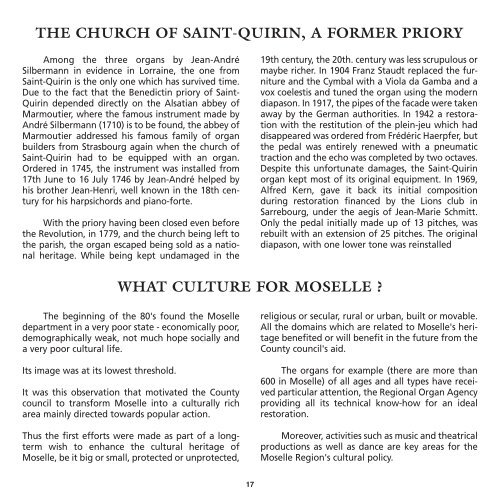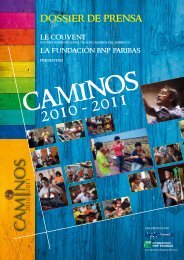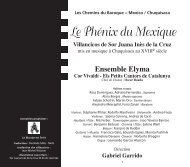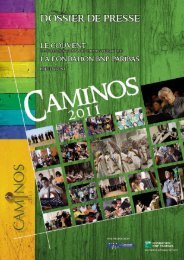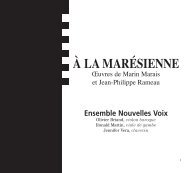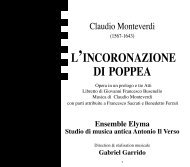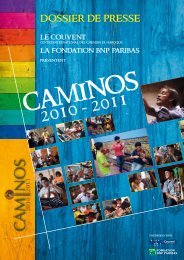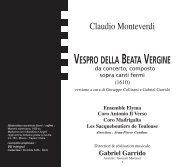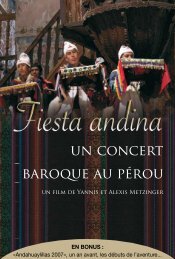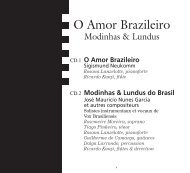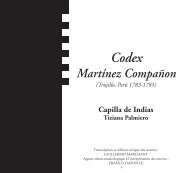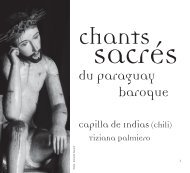Untitled - Les chemins du Baroque
Untitled - Les chemins du Baroque
Untitled - Les chemins du Baroque
Create successful ePaper yourself
Turn your PDF publications into a flip-book with our unique Google optimized e-Paper software.
ThE chuRch Of SAInT-quIRIn, A fORMER pRIORY<br />
Among the three organs by Jean-André<br />
Silbermann in evidence in Lorraine, the one from<br />
Saint-Quirin is the only one which has survived time.<br />
Due to the fact that the Benedictin priory of Saint-<br />
Quirin depended directly on the Alsatian abbey of<br />
Marmoutier, where the famous instrument made by<br />
André Silbermann (1710) is to be found, the abbey of<br />
Marmoutier addressed his famous family of organ<br />
builders from Strasbourg again when the church of<br />
Saint-Quirin had to be equipped with an organ.<br />
Ordered in 1745, the instrument was installed from<br />
17th June to 16 July 1746 by Jean-André helped by<br />
his brother Jean-Henri, well known in the 18th century<br />
for his harpsichords and piano-forte.<br />
With the priory having been closed even before<br />
the Revolution, in 1779, and the church being left to<br />
the parish, the organ escaped being sold as a national<br />
heritage. While being kept undamaged in the<br />
The beginning of the 80's found the Moselle<br />
department in a very poor state - economically poor,<br />
demographically weak, not much hope socially and<br />
a very poor cultural life.<br />
Its image was at its lowest threshold.<br />
It was this observation that motivated the County<br />
council to transform Moselle into a culturally rich<br />
area mainly directed towards popular action.<br />
Thus the first efforts were made as part of a longterm<br />
wish to enhance the cultural heritage of<br />
Moselle, be it big or small, protected or unprotected,<br />
19th century, the 20th. century was less scrupulous or<br />
maybe richer. In 1904 Franz Staudt replaced the furniture<br />
and the Cymbal with a Viola da Gamba and a<br />
vox coelestis and tuned the organ using the modern<br />
diapason. In 1917, the pipes of the facade were taken<br />
away by the German authorities. In 1942 a restoration<br />
with the restitution of the plein-jeu which had<br />
disappeared was ordered from Frédéric Haerpfer, but<br />
the pedal was entirely renewed with a pneumatic<br />
traction and the echo was completed by two octaves.<br />
Despite this unfortunate damages, the Saint-Quirin<br />
organ kept most of its original equipment. In 1969,<br />
Alfred Kern, gave it back its initial composition<br />
<strong>du</strong>ring restoration financed by the Lions club in<br />
Sarrebourg, under the aegis of Jean-Marie Schmitt.<br />
Only the pedal initially made up of 13 pitches, was<br />
rebuilt with an extension of 25 pitches. The original<br />
diapason, with one lower tone was reinstalled<br />
WhAT cuLTuRE fOR MOSELLE ?<br />
17<br />
religious or secular, rural or urban, built or movable.<br />
All the domains which are related to Moselle's heritage<br />
benefited or will benefit in the future from the<br />
County council's aid.<br />
The organs for example (there are more than<br />
600 in Moselle) of all ages and all types have received<br />
particular attention, the Regional Organ Agency<br />
providing all its technical know-how for an ideal<br />
restoration.<br />
Moreover, activities such as music and theatrical<br />
pro<strong>du</strong>ctions as well as dance are key areas for the<br />
Moselle Region's cultural policy.


